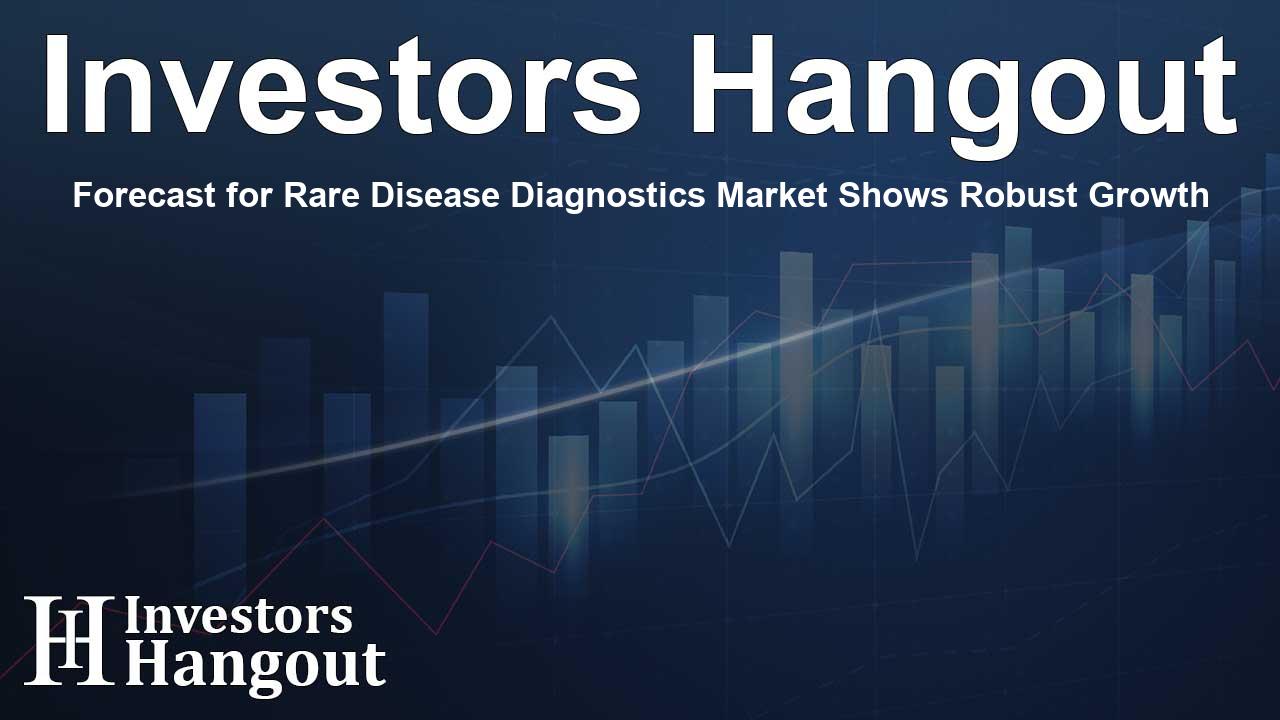Forecast for Rare Disease Diagnostics Market Shows Robust Growth

Insights into the Rapid Growth of Rare Disease Diagnostics
The rare disease diagnostics market is on the verge of a significant transformation, driven by groundbreaking advancements in genomic technologies and innovative analytical approaches. Recent insights suggest that the market could see a robust growth trajectory, projected to rise from $21.6 billion in 2024 to an impressive $34.7 billion by 2029. This represents a compound annual growth rate (CAGR) of 9.9% during this period.
Understanding the Drivers Behind Market Expansion
Numerous factors are propelling the growth of the rare disease diagnostics sector. One of the primary motivators is the persistent unmet need within the field. Many rare diseases go undiagnosed or are misdiagnosed due to their complexity and the limitations of existing diagnostic tools. As a result, the demand for advanced and precise diagnostic instruments is escalating.
Legislative and Technological Impacts
The Orphan Drug Act plays a vital role in this domain, offering incentives for the development of treatments for rare diseases. This legislation includes tax credits and market exclusivity, which stimulate investments in diagnostics as part of a broader initiative to develop orphan drugs.
Moreover, the advancement in gene therapy is presenting new opportunities and challenges. As therapies that target genetic disorders become more prevalent, there is a heightened need for precise diagnostics to identify the right candidates for such therapies, fostering innovation in the diagnostics landscape.
Emerging Trends Shaping the Market
Government and non-profit initiatives have also contributed significantly to awareness and funding related to rare disease research and diagnostics. These initiatives are critical in developing and adopting new diagnostic technologies. Coupled with advances in genomic technologies and bioinformatics, these efforts enable a more detailed analysis of the genetic data crucial for the diagnosis of rare diseases.
Cost Reductions Transforming Accessibility
Importantly, the decreasing costs associated with next-generation sequencing (NGS) are making routine diagnostic testing more accessible. This affordability encourages healthcare providers to adopt NGS technologies, significantly accelerating the pace at which these diagnostics are utilized in clinical settings.
Market Segmentation and Future Outlook
The detailed market assessment includes various segments categorized by analysis platform, target, disease class, and test purpose. By understanding these segments, stakeholders can make informed decisions and tailor their strategies to effectively navigate this evolving market landscape.
Furthermore, regions covered in the analysis extend globally, showcasing a comprehensive picture of market dynamics across North America, Europe, Asia-Pacific, and the rest of the world, including high-impact countries such as Canada, Germany, the U.K., and Japan.
Prominent Players Driving Innovation
Leading companies in the market are actively working to enhance their offerings, including 3Billion Inc., Ambry Genetics, and Illumina Inc. Their efforts are vital for establishing standards in the field of rare disease diagnostics.
Frequently Asked Questions
What is the current size of the rare disease diagnostics market?
The market was valued at approximately $19.7 billion in 2023 and is forecasted to grow to $34.7 billion by 2029.
What factors contribute to the growth of this market?
Main factors include significant unmet needs in diagnostics, supportive legislation like the Orphan Drug Act, and advances in gene therapy.
Which technologies are leading the market?
Next-generation sequencing (NGS) technologies are understood to dominate the market through 2029.
What initiatives support the development of rare disease diagnostics?
Government and non-profit initiatives play a crucial role in raising awareness and securing funding for research.
Why is there a demand for precise diagnostics in gene therapy?
Precise diagnostics are essential for identifying suitable candidates for gene therapies, pushing innovation in this area.
About The Author
Contact Caleb Price privately here. Or send an email with ATTN: Caleb Price as the subject to contact@investorshangout.com.
About Investors Hangout
Investors Hangout is a leading online stock forum for financial discussion and learning, offering a wide range of free tools and resources. It draws in traders of all levels, who exchange market knowledge, investigate trading tactics, and keep an eye on industry developments in real time. Featuring financial articles, stock message boards, quotes, charts, company profiles, and live news updates. Through cooperative learning and a wealth of informational resources, it helps users from novices creating their first portfolios to experts honing their techniques. Join Investors Hangout today: https://investorshangout.com/
The content of this article is based on factual, publicly available information and does not represent legal, financial, or investment advice. Investors Hangout does not offer financial advice, and the author is not a licensed financial advisor. Consult a qualified advisor before making any financial or investment decisions based on this article. This article should not be considered advice to purchase, sell, or hold any securities or other investments. If any of the material provided here is inaccurate, please contact us for corrections.
